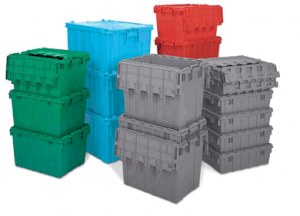 The way consumers are buying goods is changing due to the convenience and competitiveness of Internet shopping. Companies today need to find affordable ways to get their products to customers. But can these also be environmentally sustainable?
The way consumers are buying goods is changing due to the convenience and competitiveness of Internet shopping. Companies today need to find affordable ways to get their products to customers. But can these also be environmentally sustainable?
According to a recent white paper entitled, “Packaging and the Internet” that was issued by the Industry Council for Packaging and the Environment, the answer is “yes”.
Customers Demand Low Environmental Impact
Many, if not most, retailers today offer some sort of home delivery or click-and-collect service, according to the report. This requires companies to consider packaging that is both cost-effective and provides adequate protection during transport. At the same time, consumers want to be reassured that the products they order have the lowest possible environmental and social impacts.
“Cost-effectiveness and environmental sustainability are two sides of the same coin,” the report’s authors write. “Packaging has to be designed in the context of the protection required by the product, the strains and stresses of the distribution chain, and the needs of the end user. Simple rules cannot be applied to supply chains, which are complex and uniquely designed.”
Changing Supply Chain Landscape
The explosion of e-commerce offers the opportunity to reconsider the entire supply chain, according to the report. New types of packaging and even innovative new delivery systems — such as Amazon’s recent announcement that it plans to use unmanned helicopter drones to deliver packages to consumers within 30 minutes of order placement — are now achievable.
But the rise of e-commerce also raises some important questions, including:
- Is it possible to simplify packaging for home delivery?
- What types of delivery systems reduce environmental impact while also reducing costs?
- Is re-usable packaging feasible?
- Can outer packaging — or secondary grouping and transport — be eliminated or minimized?
- How can ease of handling and opening be optimized?
Retailers also need to consider the complexity and variability of orders in order to maximize efficiency during fulfillment, according to the report. For example, a customer ordering a variety of products from Amazon or another retailer may require individual items to come from different depots. How can packaging then be minimized in order to reduce environmental impact and costs while still meeting the customer’s expectations?
Packaging as Part of the Product Itself
The key may be putting into place a systematic approach to new pack selection. Retailers can assess packaging as part of the product and its supply chain, rather than as an isolated entity.
For example, some companies today are developing new ways to package products to order, rather than using stock box or packaging sizes. While the up-front investment may be a little higher, the long-term savings in shipping costs, the reduced impact on the environment and improved customer satisfaction may make it worthwhile.
The environmental impact of packaging is something most companies cannot ignore. The European Union recently implemented strict requirements for any packages that are used in any of its member countries. And in the UK, local authority Trading Standards Officers are responsible for ensuring compliance.
The changing demands of the marketplace will likely force many retailers to reconsider their packaging, its costs and its long-term impact on the environment.
